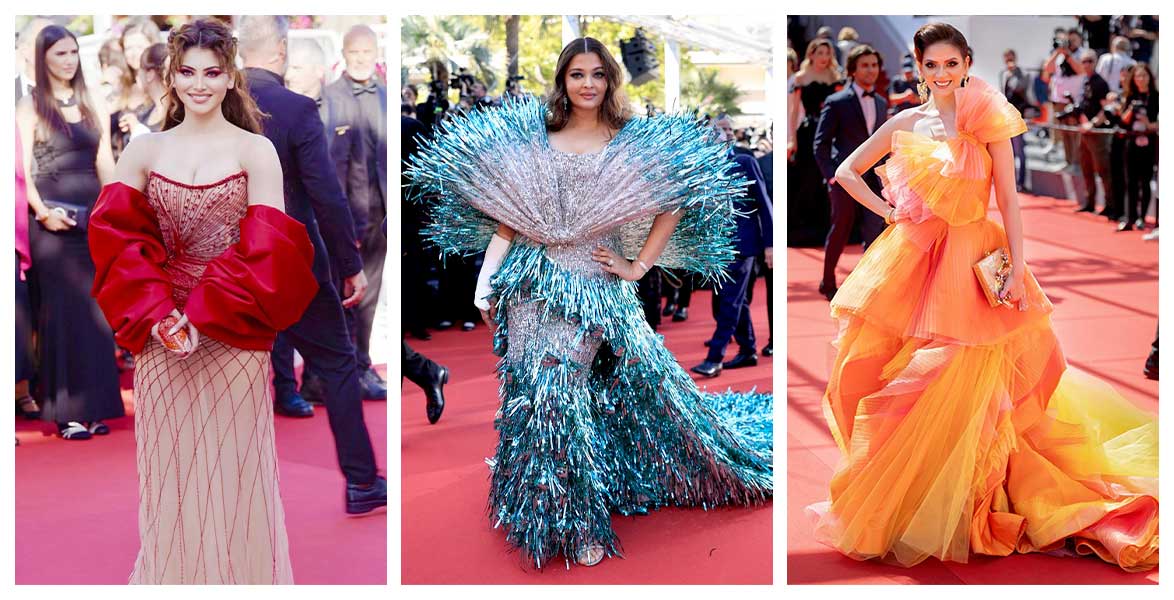The Cannes Film Festival is a prestigious event where cinema often finds itself competing with the beauty and fashion industries for the spotlight. This year, directors like Payal Kapadia for All We Imagine as Light, Sandhya Suri for Santosh, and Karan Kandhari for Sister Midnight are juxtaposed against actors and influencers such as Aishwarya Rai Bachchan, Sobhita Dhulipala, Kiara Advani, Urvashi Rautela, Priyanka Bajaj Sibal, Ankush Bahugana, Masoom Minawala, and soon-to-arrive Anushka Sharma. This contrast highlights the ongoing struggle between genuine cinematic achievements and the allure of fashion.
Cinema Versus Beauty-Fashion Brands
The filmmakers represent global and Indian cinema, judged on their creative skills and the quality of their work, rather than their appearance or stylistic choices. On the other hand, actors and influencers are often evaluated based on their looks, outfits, and the brands they endorse, creating a superficial and highly competitive environment.
A Slap on the Face of Indian Fashion & Style
Recent days have shown that the attention game on social media is dominated by appearances. Many Indian stars, despite the efforts of their styling teams, have failed to make a lasting impression due to poor fashion choices. This failure reflects poorly on Indian fashion, stylists, and the marketing teams behind these high-profile appearances. The industry’s inability to present these celebrities effectively on such a grand stage is a significant setback.
The Unfolding Drama at Cannes
The 77th Cannes Film Festival has felt like watching a carousel of comedy, embarrassment, and disappointment. Aishwarya Rai Bachchan, a veteran and long-time L’Oreal ambassador, remains a complex figure in the “look politics” of Cannes. Despite her unique beauty and status, her fashion choices, often crafted by designers Shane and Falguni Peacock, have been widely critiqued. Rai-Bachchan’s case highlights a recurring issue: while she continues to grace the red carpet, her styling consistently falls short, suggesting deeper issues in beauty brand marketing and celebrity image management.
Red Carpet Reality Check
Rai-Bachchan is just one example of the broader challenges faced by Indian representatives at Cannes. The red carpet is not an equal opportunity platform, often highlighting the tension between glamour and the pressing issues of our time, such as climate change and social justice. Contemporary cinema has become more inclusive and reflective of our global anxieties, yet the red carpet seems increasingly disconnected from these themes.
The Indian Contingent’s Struggle
The current portrayal of Indian fashion at Cannes reveals a stubborn adherence to traditional notions of fashion and beauty. Despite the Indian fashion industry’s strides in innovation and material experimentation, the red carpet appearances often fall back on outdated stereotypes. Influencers and celebrities, like Ankush Bahugana, Urvashi Rautela, Priyanka Bajaj Sibal, and Vishnu Kaushal, have made bold but often misguided fashion choices, reflecting a cultural lag in understanding modern aesthetics.
Highlights and Lowlights
Kiara Advani’s elegant arrival, Sunanda Sharma’s traditional white anarkali, and Sobhita Dhulipala’s daring purple ensemble are noteworthy. Dhulipala, despite her striking appearance, also seems caught in the trap of excessive styling. Her look-at-me attitude is evident but needs more substance and less theatrics to make a meaningful impact at Cannes.
Conclusion
The Cannes Film Festival remains a complex interplay of cinema, fashion, and global issues. For India, the challenge lies in balancing cultural representation with contemporary relevance. The industry must learn to navigate the red carpet with grace and substance, ensuring that Indian fashion and cinema receive the recognition they deserve without succumbing to superficial trends.







